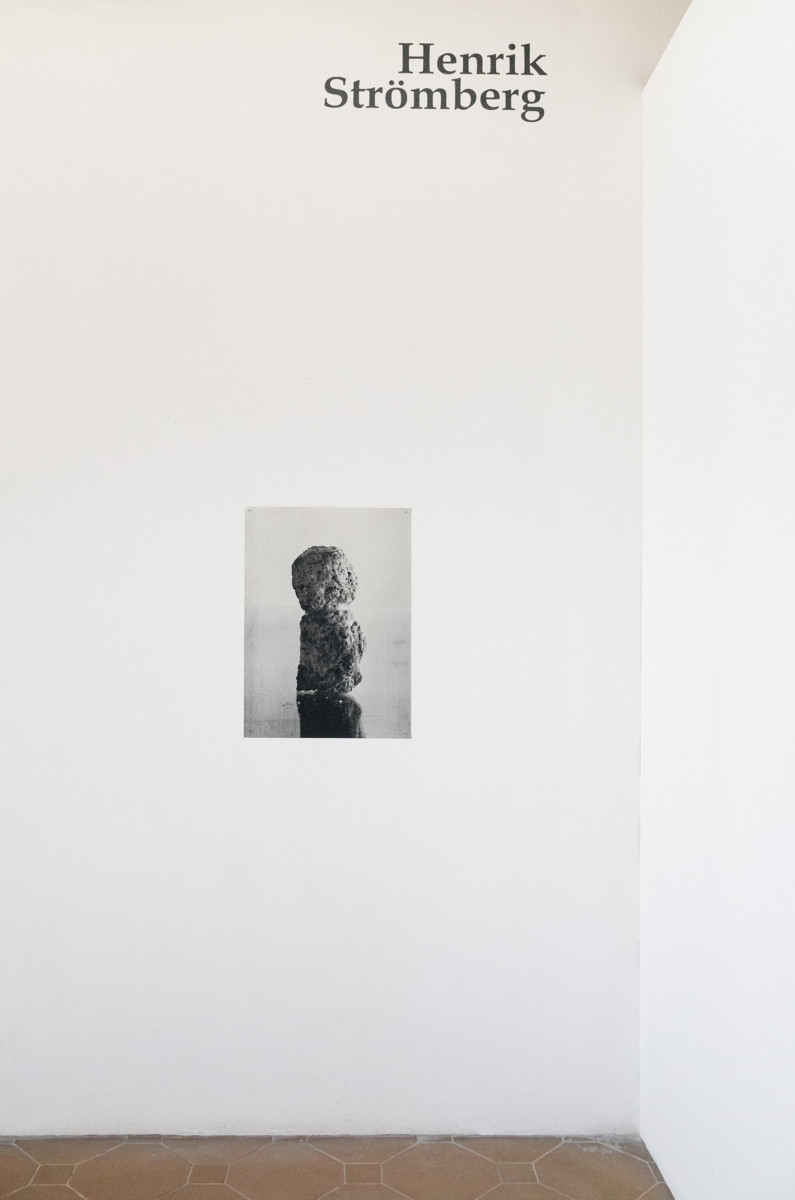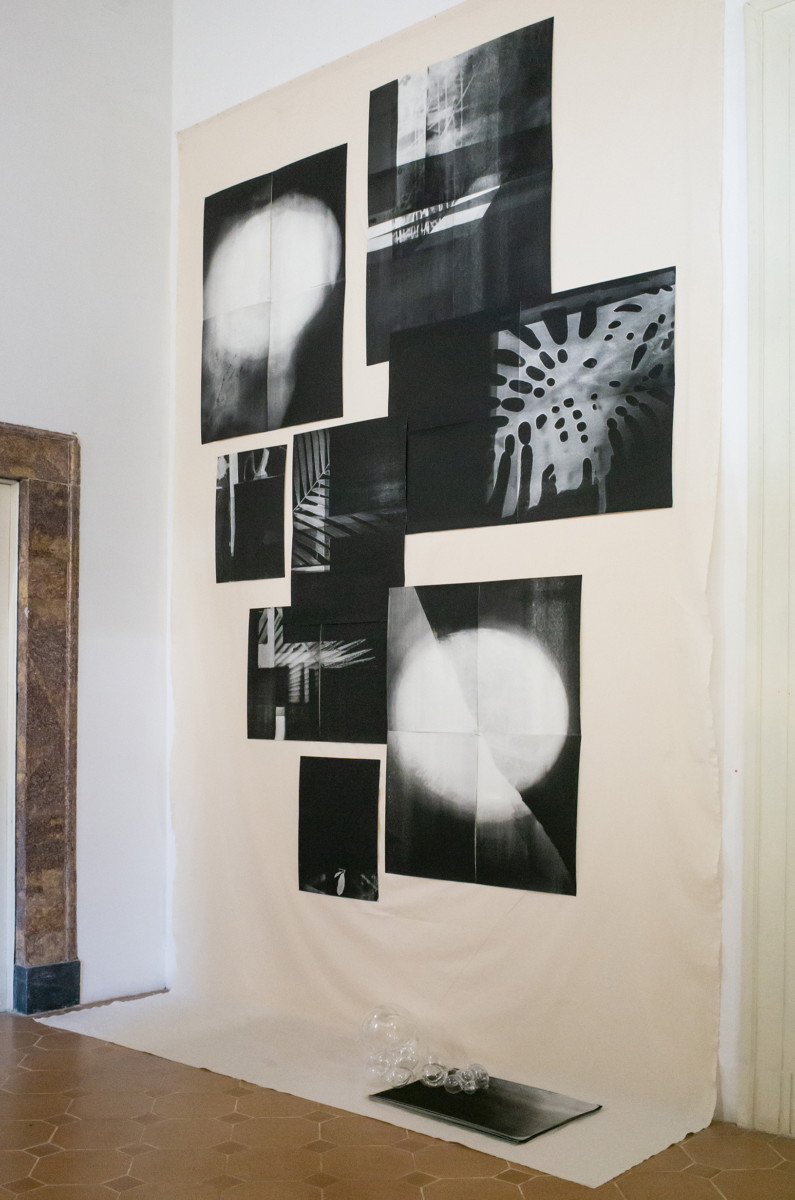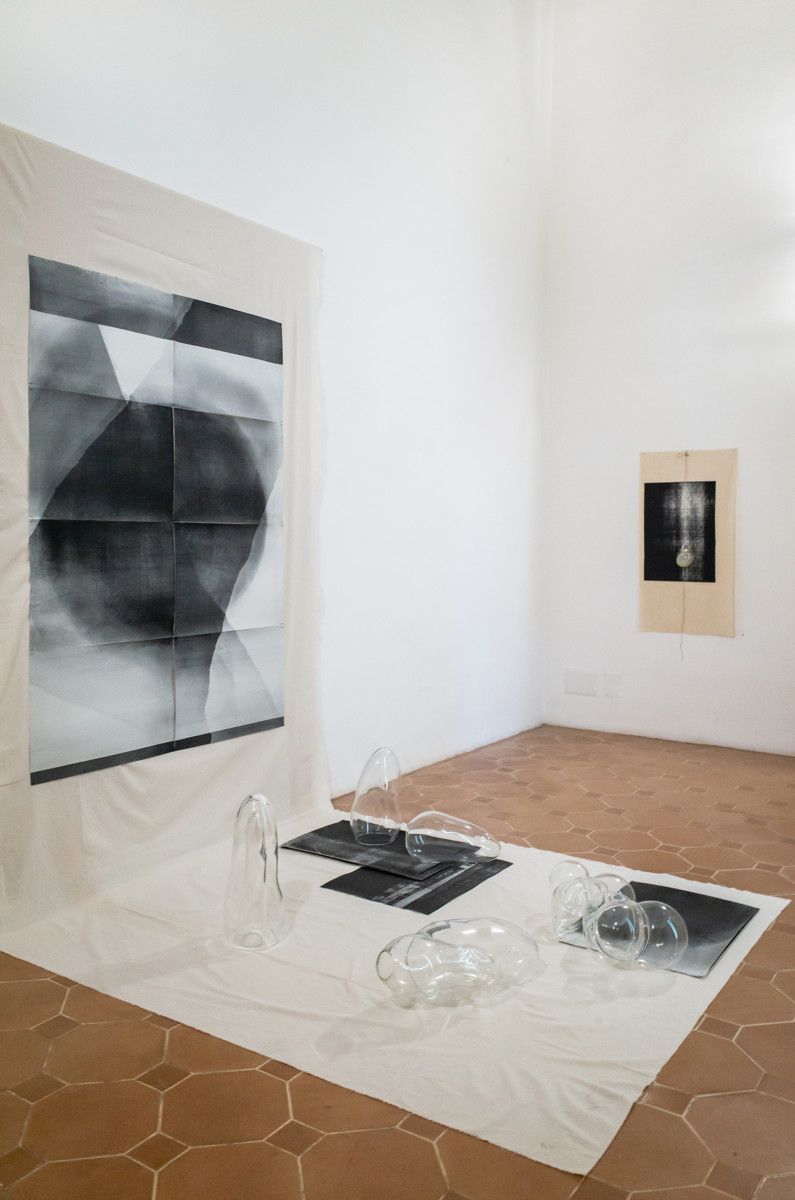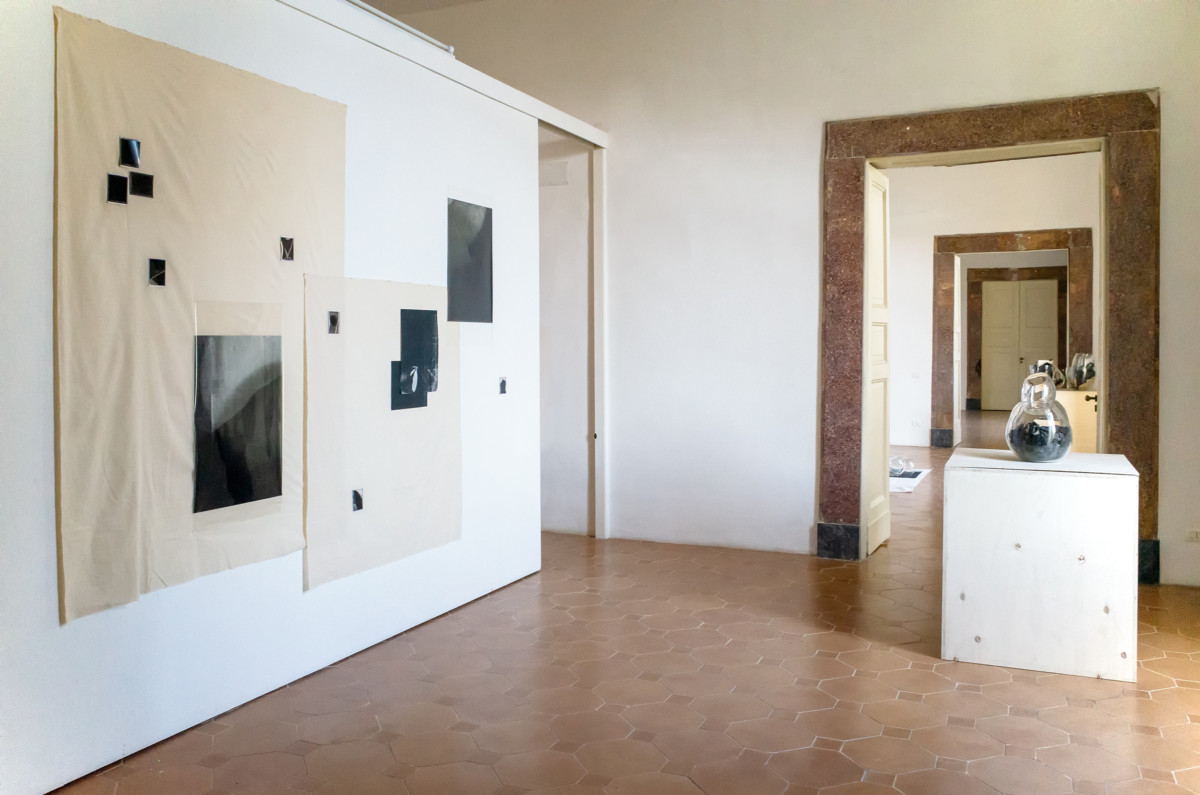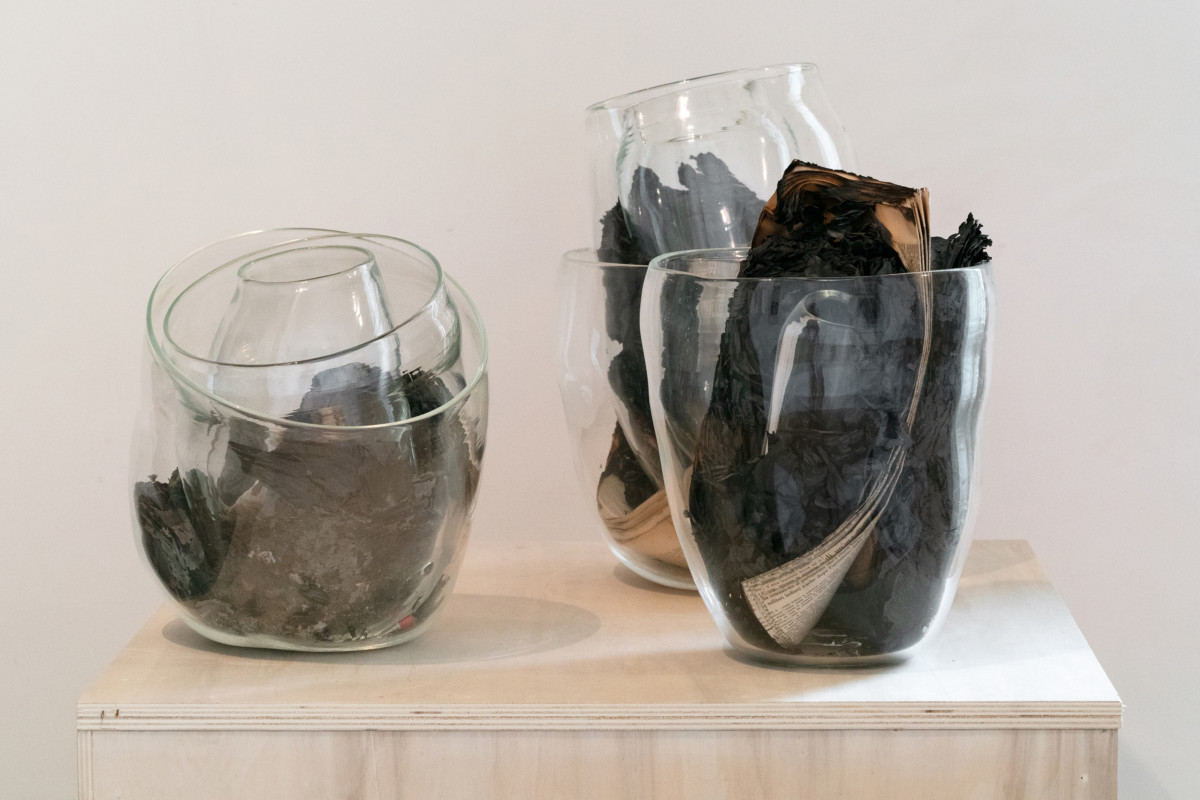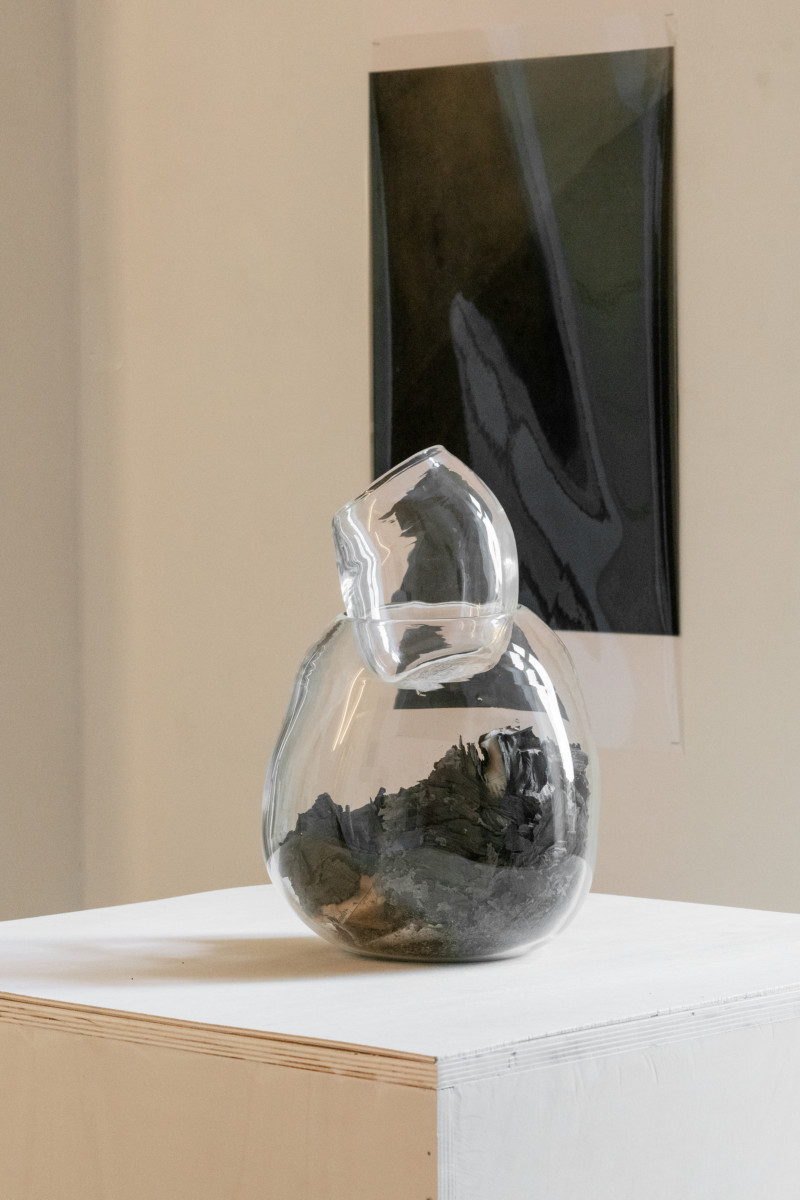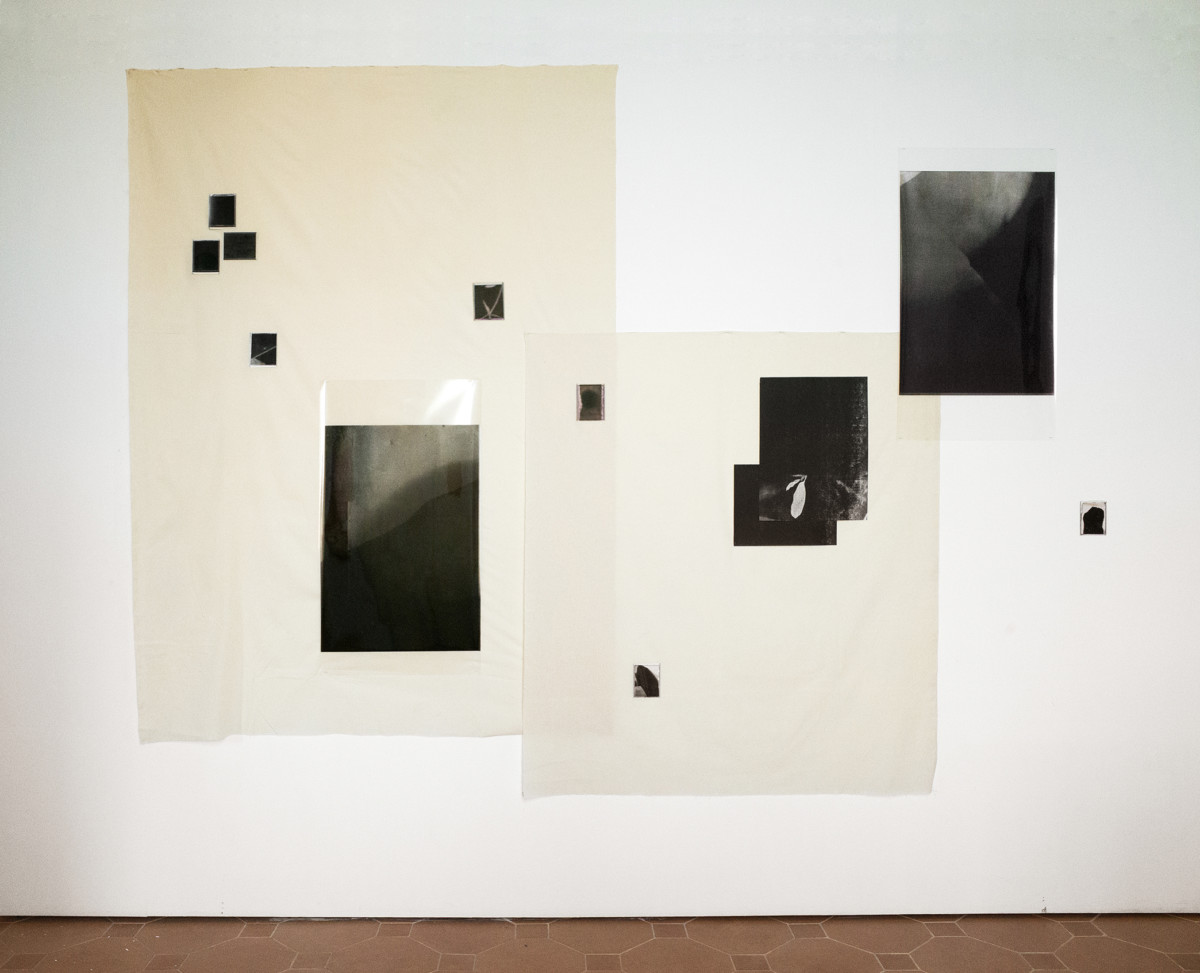
- This event has passed.
HENRIK STRÖMBERG – Refraction of Lightness
16 October 2019-19:00/31 January 2020-20:00
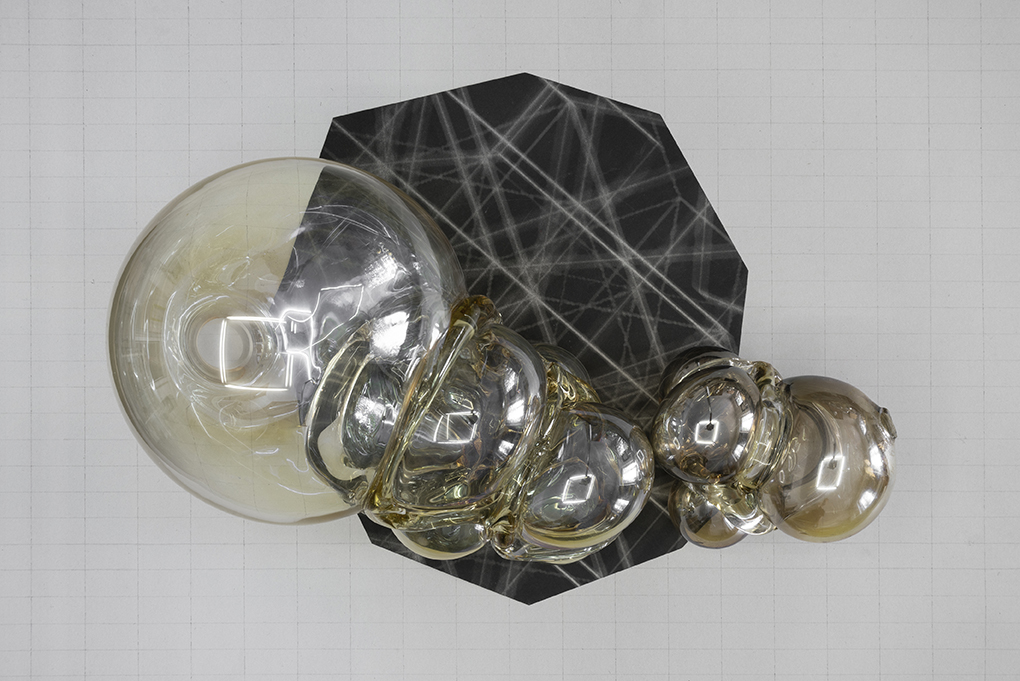
October 16th 2019 – January 31st 2020
OPENING OCTOBER 12th, 7:00 p.m.
Associazione Shōzō Shimamoto – Palazzo Spinelli di Tarsia
Largo Tarsia 2, Naples
Curated by Chiara Valci Mazzara and Loredana Troise
“Accumulating, transforming,
creating photographic images and volumes,
materializing the action, I isolate the creative gesture as a moment fixed in time.” – Henrik Strömberg
The Quartiere dell’Arte (Art District), program conceived by Fondazione Morra to foster a new awareness of contemporary art in the city of Naples, presents a new exhibition project created for Palazzo Spinelli di Tarsia, home of Shōzō Shimamoto Foundation.
The space will host the show Refraction of lightness, displaying a site-specific installation of serigraphs and hand blown glass sculptures and volumes by the Swedish artist Henrik Strömberg.
The exhibition, curated by Chiara Valci Mazzara (fontaine b. Berlin, Paris) and Loredana Troise, in collaboration with Fondazione Morra together with Laboratorio Avella Naples with Gianluigi Prencipe, is the result of the three-month residency of Henrik Strömberg.
In the historical spaces of Palazzo Tarsia, glass sculptures and serigraphs are presented as the two main areas of density of the installation, determining the core around which the presentation of further assembled elements, organized in an immersive landscape, revolves.
The serigraphs are relocated as a uniqum: a large-scale work mirrors (refracts into) the new series of glass sculptures conceived and created on the occasion of the exhibition.
The work of Henrik Strömberg is the result of a creative process of investigation about form and content, volume and concept, multiplication and refraction of meaning.
Living and recovered materials such as paper, glass, burned newspapers and pigments contribute to the creation of works that allow the viewer to immerse in a landscape organised as a self-sufficient ecosystem that, by suggesting new forms, creates new contents. Where every element becomes part of a whole.
The assembled prints creating a new system of references relating to the meanings and aesthetics they originally had, are now enriched with additional semantics, while, at the same time, the glass volumes reflect the complexity of the creative gesture. In the glass works, a transformation and the alteration of content, occur simultaneously.
Ultimately, the matter is shaped and transferred through different media, all the elements are commuting back and forth regularly concurring, and eventually, overlaying meanings. Nothing can be isolated, everything mutate as when volcanic magma erupts.
In the spaces dedicated to the master of the Gutai group, the Northern European artist approach the exhibition space through the system of references linked to the creative gesture. At the same time, the references to Surrealism, to the re-evaluation of the object-trouvee and the use of the form to act on the content are perceived as a characterizing elements of Strömberg’s work.
In the printed pieces the roots of the past meanings, and -for the sculptural volumes- the references to biological forms are perceived diving into an alternate drift of perspective: Strömberg reduces the source to polarise the content at the very core of the image perception. He doesn’t settle down for clarity, rather he pursues the action of placing triggers to initiate a new existence of the subject. The clarity being left aside, it is consequential that the viewer is exposed to an unexpected outcome and to an ephemeral content.
While the installation of the volumes and the different components takes shape, a sub-ecosystem formed through the combination between seemingly disparate elements appears as a logical consequence. Photographic elements, negative cut outs, paper works and sculptural volumes are coexisting but their accumulation is not left to chance, rather to a multiplication of occasions. The various elements commit to deliver a wider perception of the different pieces, it’s like a dance where every single element concur to a higher harmony.
The sequence of reflections, the portions of images and the verticality of the installation take form as an immersive landscape through which the viewer is moving, absorbing the complexity of the elements, never redundant and always cohesive. There’s not a unique interpretation but rather a kaleidoscope given by the use of different media equally involved in the final result.
Chiara Valci Mazzara
Henrik Strömberg (b. 1970) | based in Berlin (Germany) | graduated from Camberwell College of Art in London (United Kingdom) and Academy of Performing Arts FAMU in Prague (the Czech Republic) | works with the idea of metamorphosis, decay and the transformation of materials, sculptural objects and their photographic documentation, as well as the deconstruction and transformation of the photographic image itself | his works have been presented at solo and group exhibitions in Germany, Italy, Sweden, Switzerland, the United Kingdom, Poland, France, the Czech Republic and the U.S.A., and acquired by various collections, including: Alexander Tutsek-Stiftung, Munich Germany – Ann Wolff Foundation, Sweden – Christine Symchych Collection, USA, – Kultur Hässleholm, Sweden – Mecklenburgisches Künstlerhaus, Schloss Plüschow, Germany – La Luxembourgeoise SA, Luxemburg.
- Installation View (detail), Refraction of Lightness, Palazzo Spinelli di Tarsia, Napoli, 2020 Henrik Strömberg Courtesy Fondazione Morra
- Installation View, Refraction of Lightness, Palazzo Spinelli di Tarsia, Napoli, 2020 Henrik Strömberg Courtesy Fondazione Morra
- Installation View (detail),
- Installation View, Refraction of Lightness, Palazzo Spinelli di Tarsia, Napoli, 2020 Henrik Strömberg Courtesy Fondazione Morra
- Installation View, Refraction of Lightness, Palazzo Spinelli di Tarsia, Napoli, 2020 Henrik Strömberg Courtesy Fondazione Morra
- Installation View, Refraction of Lightness, Palazzo Spinelli di Tarsia, Napoli, 2020 Henrik Strömberg Courtesy Fondazione Morra
- Installation View, Refraction of Lightness, Palazzo Spinelli di Tarsia, Napoli, 2020 Henrik Strömberg Courtesy Fondazione Morra
- Installation View, Refraction of Lightness, Palazzo Spinelli di Tarsia, Napoli, 2020 Henrik Strömberg Courtesy Fondazione Morra
- “Double Negative”, Refraction of Lightness, Palazzo Spinelli di Tarsia, Napoli 2020 Henrik

